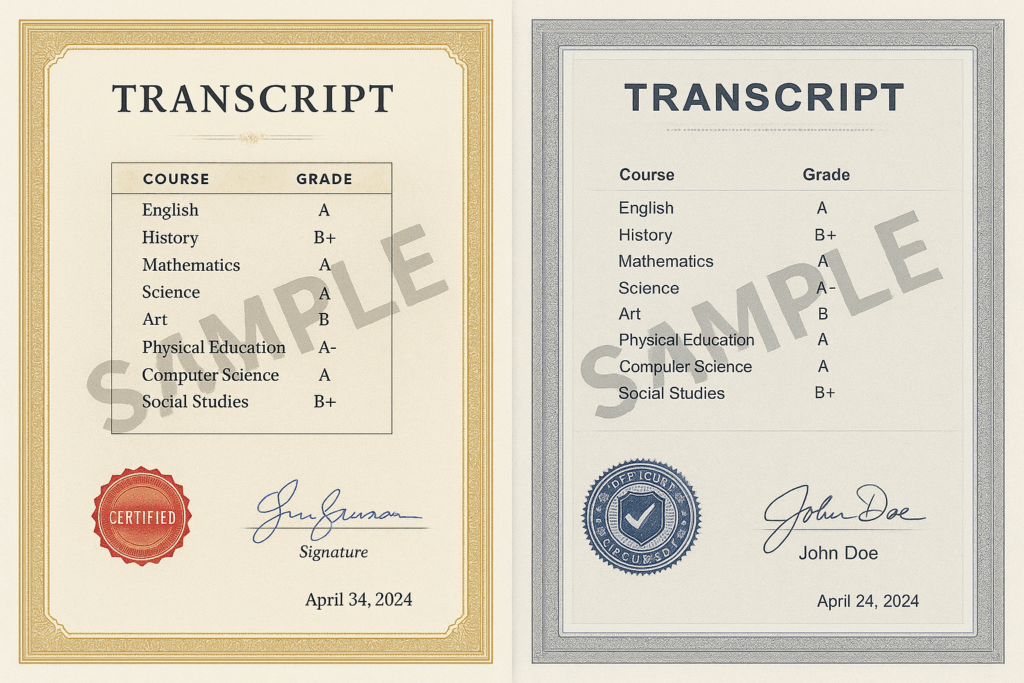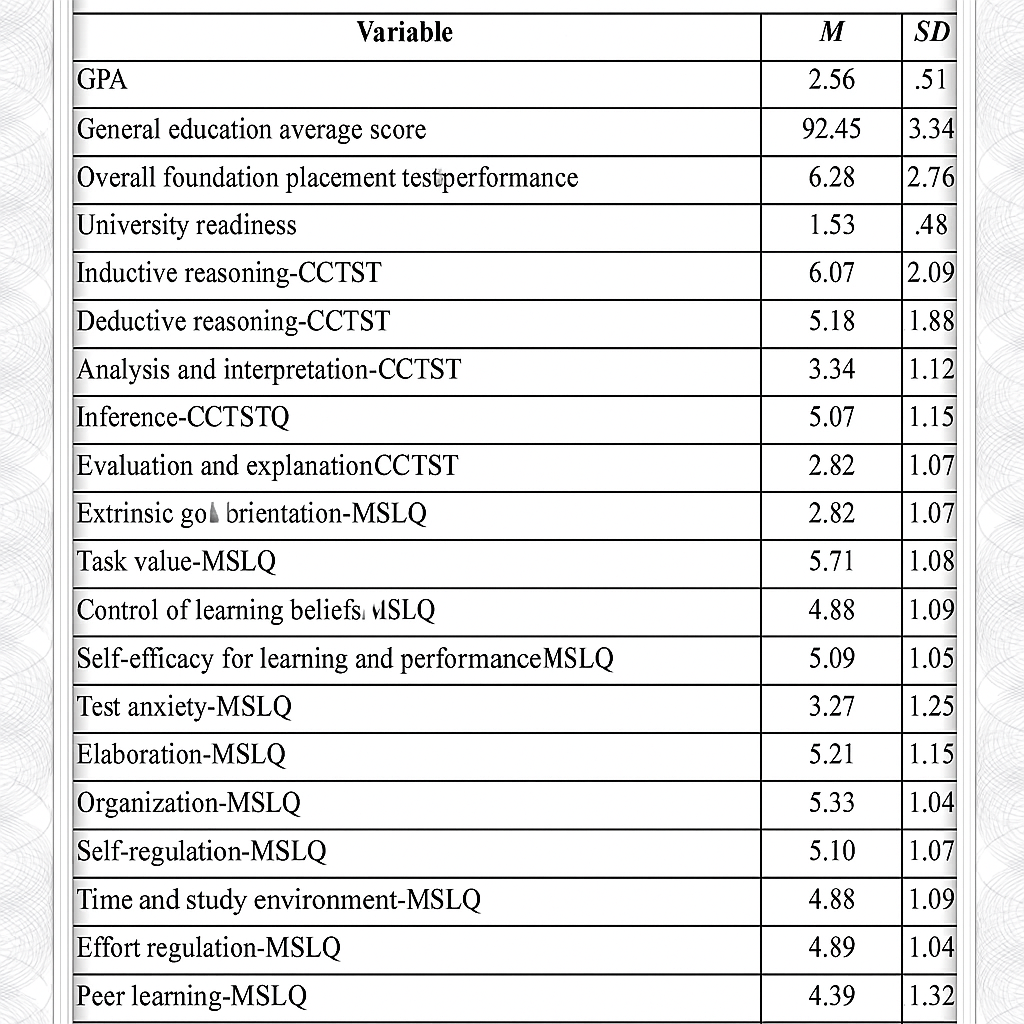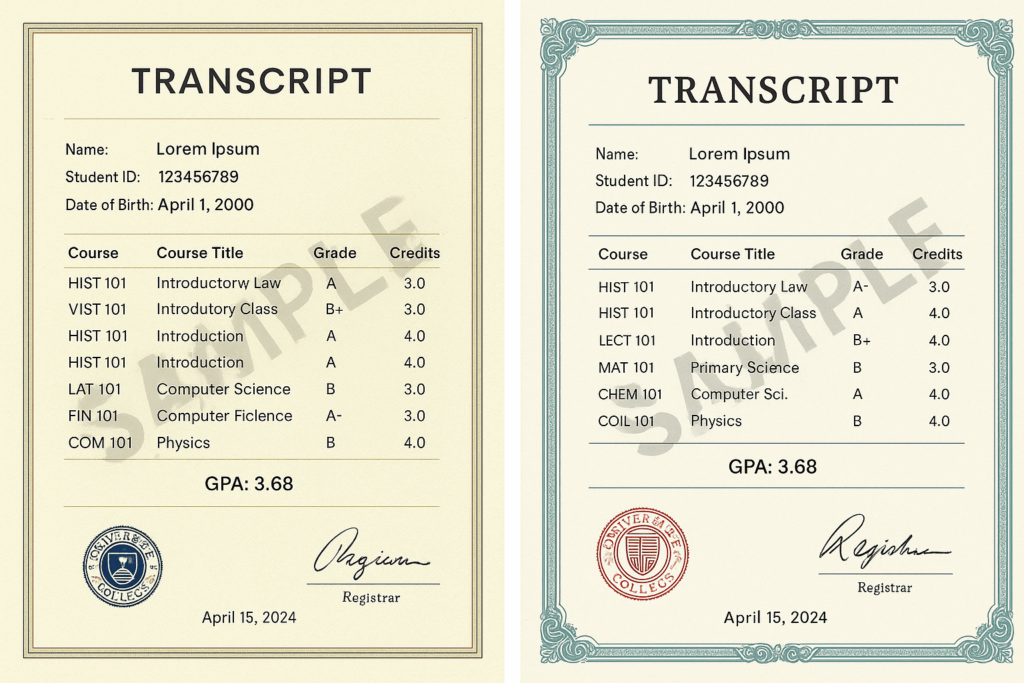Table of Contents
Introduction: Deconstructing Authenticity in Academic Records
Fake Academic Transcript: 7 Tips for Crafting Yours , An academic transcript is more than a piece of paper; it is a detailed chronicle of a student’s intellectual journey, a summary of their academic performance, and a key that unlocks future opportunities. It’s a document held to a high standard of authenticity, with its legitimacy rarely questioned. But what constitutes that authenticity? What are the layers of detail, design, and physical substance that separate a genuine school transcript from a forgery? This guide deconstructs the anatomy of academic records to provide a comprehensive understanding of their creation.

The Allure of a “Realistic” Transcript and the Need for Scrutiny
The demand for a realistic fake transcript often stems from a desire to present an idealized academic history, bypass bureaucratic hurdles, or simply replace a lost document for personal archiving. In a competitive environment where credentials can heavily influence outcomes, the allure of a perfect record is powerful. Despite some shifts in corporate culture, the value of a degree remains high; a study from Harvard Business School found that the hiring of non-degree candidates only increased by a marginal 3.5 percentage points between 2014 and 2023. This continued emphasis on traditional qualifications underscores why some individuals seek replica transcripts. This allure, however, necessitates an even greater level of scrutiny from institutions and employers, making the creation of a believable replica an exercise in extreme detail.
Purpose of This Guide: Understanding the Intricacies of Transcript Replication (for educational or artistic purposes only)
This guide serves as an educational exploratof the complex process of reproducingting academic documenThe emphasis is on the skill and careful attention needed to make a realistic-looking and well-built replica transcript for honest, non-misleading reasons.ses. Such uses include creating props for theatrical or film productions, serving as novelty custom gifts, or acting as personal placeholders for lost or damaged records. The intent is not to facilitate fraud but to appreciate the artistry and technical skill involved in reproducing complex, secure documents.
Crucial Disclaimer: Legal and Ethical Ramifications of Falsifying Documents (e.g., criminal record, fake documents, academic documents)
It is imperative to state unequivocally that using a fake transcript or any falsified academic documents for deceptive purposes—such as applying for a job, gaining admission to an educational institution, or securing a professional license—is illegal and carries severe consequences. Such actions constitute fraud and can lead to immediate termination, expulsion, and legal prosecution, resulting in a permanent criminal record. In 2023, approximately 78% of U.S. employers considered criminal background checks essential, demonstrating the high probability of discovery and the gravity of the offense. The creation and use of fake documents is a global issue, as seen when a criminal ring in Turkey was dismantled after producing dozens of counterfeit diplomas and certificates.
The Foundation: Understanding Genuine Academic Transcripts
Before attempting to replicate any document, one must first master its original form. Genuine academic transcripts are carefully designed records that follow specific conventions. They are not merely lists of courses and grades but official documents with layers of information and security.
Core Components of an Actual Transcript
A stand The school transcript contains several key pieces of information, including its main components. t At its most basic level, it includes the student’s personal details, such as their full name and student ID number, date of birth, and the institution’s information (name, address, and official logo). The academic core consists of a chronological list of courses taken, the corresponding grades, the credit hours awarded for each course, and the calculated GPA. calculated Grade Point Average (GPA) for each term and cumulat Crucially, it will also state the degree awarded and the official graduation date. Many transcripts also feature a “Transcript Key” on the reverse side. s This document explains the institution’s grading system, course numbering, and any academic honors or notations used in the document.
Variations Across Academic Levels and Institutions
There is no universal format for academic transcripts. A high school transcript, for instance, will differ significantly from a university one. High school records often list courses by academic year and may include standardized test scores (like the SAT or ACT) and class rank. A fake college transcript for an undergraduate program will focus on major-specific coursework, general education requirements, and credits earned toward a specific degree. Graduate-level transcripts are even more specialized, often listing seminar and research-based courses with a different grading scale. Furthermore, each institution has its own unique layout, typography, and branding, which can change over time.
Evolution of Transcript Design and Layouts
Transcript design is not static. Older records from decades past might be typewritten on simple letterhead, while modern transcripts are computer-generated documents with sophisticated layouts and security features. Many universities have transitioned through multiple design iterations. Understanding the specific era for which a replica is intended is crucial. A transcript that claims to be from 1985 but uses a layout introduced in 2010 raisesan immediate red flag. This evolution reflects advancements in both printing technology and security measures aimed at preventing fraudulent copies.
The Art of Replication: Crafting the Visuals and Content
Creating a realistic replica transcript is an exercise in precision, combining graphic design skills with a profound understanding of academic conventions. Every element, from the font choice to the course codes, must be logically consistent and visually accurate.
Sourcing Reference Materials and Information
The most critical step is gathering high-quality reference materials. The goal is to study actual transcripts from the target institution and the corticosteroid. This can be challenging, but university websites, academic forums, and even publicly available student handbooks from specific years can provide valuable clues about course names, numbering systems, and departmental structures. This research phase is non-negotiable, as it forms the blueprint for the entire project. Without accurate source material, the resulting document will be based on guesswork and likely contain fatal flaws.
Mastering Transcript Design and Layout
Replicating the layout requires a keen eye for detail and proficiency in design software. Pay close attention to margins, line spacing, font types and sizes, and the precise placement of headers, footers, and logos. Many institutions use specific, sometimes proprietary, fonts. The layout must perfectly align with the known format of the school’s official documents. Using a generic template from a transcript generator may provide a basic structure, but it will lack the unique nuances that make a document appear authentic. The goal is to recreate the visual identity of the institution’s records with painstaking accuracy.
The most convincing fake academic transcript goes beyond what is simply printed on the page. The physical properties of the document—the paper, the seals, the signatures—are often the most difficult elements to replicate and the easiest ways to spot a forgery.
Populating Academic Details with Precision
This is where logical consistency becomes paramount. The list of courses must reflect a believable academic progression for the chosen major. A student wouldn’t take advanced quantum physics in their first semester. Course codes must match the institution’s format (e.g., “ENG 101” vs. “ENGL-101”). Grades should be distributed realistically; a perfect 4.0 GPA across four years is rare and can attract scrutiny. The GPA calculation must be accurate based on the credit hours and grades listed. Every detail, from the course titles to the total credits accumulated, contributes to the overall narrative of the student’s academic performance and must hold up under review.
Beyond the Print: Advanced Security Features and Physical Realism
The most convincing fake transcripts go beyond what is simply printed on the page. The physical properties of the document—the paper, the seals, the signatures—are often the most difficult elements to replicate and the easiest ways to spot a forgery.
The Crucial Role of Paper Stock and Materials
Official academic transcripts are almost never printed on standard office copy paper. Institutions use specialized security paper that has a distinct weight and texture and often contains hidden features. This paper might be chemically reactive to show signs of alteration or contain invisible fluorescent fibers that either appear under UV light or have a unique background pattern. n It is difficult to scan or copy accurately. Sourcing or convincingly simulating this type of paper stock presents a significant challenge. The tactile feel of the document is an immediate giveaway. Using the wrong paper undermines even the most perfect work. perfect design.

Replicating Authentic-Looking Seals and Embellishments
Most transcripts bear the official seal of the institution. This can be an embossed (raised) seal, a colored ink stamp, or a metallic foil seal. Each type presents its own replication challenge. Embossed seals require a custom die and press to create a crisp impression. Ink seals must match the exact color and design, avoiding the smudging or pixelation common with low-quality reproductions. Foil seals need to be applied with heat and pressure, and the foil itself must have the correct holographic or reflective properties. These embellishments are designed to be difficult to replicate and are often a key point of verification.
Watermarks, Microprint, and Tamper-Evident Features
To further enhance security, many actual transcripts incorporate advanced features. A watermark—a faint design embedded in the paper during its manufacturing—is a classic security measure. It is visible when held up to a light source but difficult to reproduce with a printer. Microprint, or tiny text that appears as a solid line to the naked eye, is another common feature used on signature lines or borders. When magnified, the text becomes legible. Additionally, some transcripts have a “VOID” pantograph, a hidden word that appears on photocopies of the document, instantly identifying them as unauthorized copies.
Authentic Signatures and Dates
The registrar’s signature is a vital component of a transcript’s authenticity. Replicating a signature requires a high-resolution source image and the ability to print it in a way that mimics real ink, avoiding the flat, lifeless look of a standard digital print. Some forgers have even used autopen machines for this purpose. The date of issue must also be logical, aligning with the graduation date and the context in which the document is being presented. Anachronisms in signatures or dates are simple but critical errors.
Output and Delivery: Digital vs. Physical Replicas
Once a design is finalized, the final output can take two forms: a digital file or a physical document. Each has its own set of considerations for maintaining realism.
Producing High-Quality Digital Copies
In an increasingly digital world, PDF copies of transcripts are common. Creating a convincing digital version requires more than just saving a design as a PDF. The file should be optimized to look like a high-resolution scan of a physical document, not a digitally native file. This can involve adding subtle texture overlays or ensuring the file properties do not contain metadata that reveals the software used to create it. Some institutions use secure, encrypted PDF delivery services, a feature that is nearly impossible to replicate authentically. The risk of AI-driven fraud is also growing; Shufti’s 2025 Education Fraud Benchmark noted that 31% of high-risk alerts in education onboarding involved deepfakes or AI-generated IDs, highlighting the technological scrutiny applied to digital documents.
Crafting Believable Physical Copies
For physical copies, the printing process is everything. A high-end laser or inkjet printer is necessary to achieve sharp text and accurate colors. The alignment must be perfect, especially if printing on pre-watermarked security paper. After printing, any seals or embossments must be applied correctly. The final product should be handled carefully to avoid creases or smudges that would be inconsistent with an officially issued document. The entire process, from paper selection to the final press of an embosser, contributes to the believability of the physical artifact.
Avoiding Detection: Common Pitfalls and Best Practices
The difference between a convincing replica and an obvious fake often lies in small, overlooked details. Understanding common mistakes is key to appreciating the complexity of authentic documents.
Inconsistencies in Data and Design
The most common failure is internal inconsistency. This includes mismatched dates (e.g., a course taken before the student was admitted), incorrect GPA calculations, course codes that don’t match the catalog for that year, or a design that blends elements from different eras of the institution’s branding. Every piece of data must logically cohere with every other piece.
Low-quality material printing
Using the wrong paper, a poorly replicated seal, or a low-resolution printer are immediate giveaways. Authentic documents have a professional, crisp quality that is difficult to achieve with standard office equipment. Smudged ink, pixelated logos, or a seal that lacks sharp definition are all signs of a non-professional production, often seen in efforts by amateur counterfeiters or low-grade services from some diploma makers.
Outdated or Incorrect Institutional Details
Universities merge, change names, and update their addresses or logos. A transcript must use the correct institutional details for the time period it represents. Listing a modern department name on a transcript from 20 years ago is a critical error. This requires diligent research to ensure every piece of identifying information is historically accurate.
The “Student Portal” Illusion: Online Verification Challenges
In the modern era, many institutions offer online portals where third parties can verify academic records directly. This represents the ultimate challenge for any fake document, as it cannot be overcome with a convincing piece of paper alone. While some fraudulent services claim to offer verification, these systems are typically short-lived and easily exposed. The shift to digital verification is the single greatest defense against the use of النصوص الأكاديمية المزيفة.
Ethical Considerations and Responsible Use
While the technical process of replication can be an interesting educational exercise, it is essential to return to the ethical and legal boundaries that govern these documents.
Reiteration of Legal Consequences (criminal record, fake documents)
The consequences of using a fake document for fraud cannot be overstated. It is a criminal act. An investigation into fraud can quickly uncover fabricated records, leading not only to job loss or academic expulsion but also to prosecution. With nearly 6% of criminal history checks uncovering a recent criminal record, the risk of a fraudulent act permanently damaging one’s future is significant and real.
Legitimate Uses for Replica Transcripts (e.g., novelty custom, theatrical props, personal archives where original is lost and not for deception)
There are legitimate scenarios for replica documents. The entertainment industry requires realistic props for films and plays. A replica transcript can be a unique, personalized novelty gift. For individuals who have lost access to their original records and cannot obtain official copies, a personally crafted replica can serve as a placeholder for their own archives, provided it is never presented as an official document.
Do employers actually check college transcripts?
Yes, many do, particularly for roles where specific academic qualifications are required by law or company policy (e.g., engineering, finance, education). Verification typically happens through a third-party background check service that contacts the institution’s registrar directly, bypassing the document provided by the candidate entirely. For this reason, a fake college transcript is highly unlikely to succeed in any formal verification process.

خاتمة
The creation of a realistic نسخة أكاديمية وهمية is a profoundly complex undertaking that requires a blend of artistry, technical skill, and exhaustive research. Deconstructing an authentic school transcript reveals layers of complexity—from the specific weight and texture of the paper to the logical consistency of the academic records contained within. Every element, including the layout, typography, seals, and advanced security features like microprint and watermarks, serves as a testament to the document’s authenticity.
Understanding these intricacies serves a valuable educational purpose, highlighting the measures institutions take to protect the integrity of their records and illuminating the craftsmanship involved in secure document design. While the knowledge can be applied to legitimate uses such as creating theatrical props or novelty items, the line between harmless replication and illegal fraud is absolute. The most critical takeaway is the recognition that digital verification systems and rigorous background checks have made it nearly impossible for a fake document to withstand official scrutiny. Ultimately, the true value lies not in deception, but in appreciating the immense detail and care embedded in a genuine academic record.


